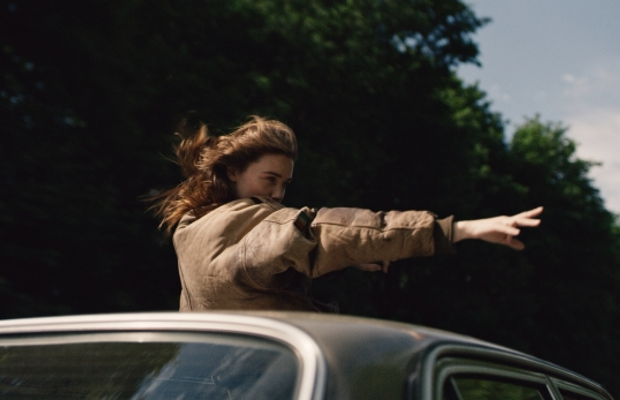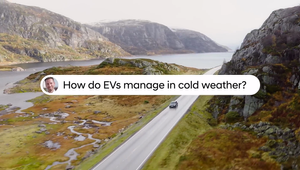
Lessons From The End Of The World

“Necessity is the mother of invention,” Plato scribes in 381 BC, unaware that his remarks would one day be co-opted by a colourist in an industry op-ed. And, whilst Plato may not have foreseen the changes our world would undergo - from new technology to artificial intelligence and automation - he was on the money with his message. As colourists, we’re often working with technology that’s been created for us (versus by us), trying to plug the gaps that inevitably arise when bending software to our needs rather than the other way around. For example, the use of legacy colour pipelines that are not up to date with the multiple delivery requirements often requested for the bevy of new standards and formats.
Ever since my university days moonlighting on grading jobs, I’ve always been intrigued by how I could push the boundaries of colour further by adapting and developing the tools available. I started my career during the turbulent transition from film to digital when many clients were shooting on film but also looking for a way to emulate the celluloid look. This formed the basis of my first R&D experiments and light bulb moments.
Since then, I’ve seen the industry shift several times, across multiple formats, platforms, generations, and guises - and been in the fray as colour has had to evolve as well. Now, as the world shifts from manual to automatic and IQ to AI - creating the tools to work for us, rather than us for them, has never been more important. At CHEAT, we’ve been working on something that will do just this…
It all started again with The End of the F***ing World season one - a co-produced Netflix and Channel 4 Emmy-nominated show we had graded back in 2017. It was the first show ever to be shot entirely in 7K and 8K, and the production had worked in SDR (Standard Dynamic Range). We also ended up using the film emulation tools I laid down the foundations for in 2013 with my research and camera tests, comparing film and digital colour response. The show was a raging success and so, understandably, when season two rolled around, we were asked to recreate the feel of season one, but this time the show had been produced in HDR (High Dynamic Range) - a completely different, and relatively new, beast.

A scene from The End of the F***ing World - Season 1
So, we got to work. The process of emulating a previous look between SDR and HDR is not as simple as solely mirroring the colour approach, and on this occasion, we couldn’t use SDR grading techniques with HDR technology to recreate the look of season one. Instead, we had to break down the fundamentals and go back to the data of the original film emulation to recreate the tools from scratch. We took on new talent - a colour scientist and engineer - to engineer the film emulation tools that I’d created for SDR into HDR Dolby vision - a complex and lengthy process that was as subjective as it was scientific. There were qualities of film print for example that are inherently SDR, so trying to create an HDR version required some creative decision-making on how we mapped an SDR look to an HDR pipeline.
After many late nights of trial and error, we got the result we were looking for: a beautifully textured, film-quality rich Americana aesthetic with an HDR ‘edge’ to it. It was the same rewarding rush we got after our experiments for season one and it became incredibly clear that playing scientist with the parameters of grading was something we had to run with.
A lot of people now understand that colour grading is (much) more than slapping a filter or look on a film and heading off to the pub for a jolly. But what is still unknown outside of the colour grading community, is that a lot of the work can, unfortunately, be more technical than creative and that a lot of time can be lost to the craft because of these highly manual tasks. For example, the work involved to isolate areas or textures within an image can be a fairly manual and slow process. What was curious to me, was to find out if some of these time-consuming aspects could be automated - freeing up time for the more subjective creative elements to come to the foreground again.

A scene from The End of the F***ing World - Season 1
My search for information led me to Romania and Vogue, in turn. An Eastern European meet up with a group of fellow colourists for a weekend of nerding out over our shared love of chromatic sensibilities, fanned the first sparks of inspiration. Back in London, we contacted a colour scientist, tasking him with developing our ability to work with texture to a finite detail, emulating the work done in the stills world, impressively demonstrated in publications such as Vogue, but with video.
Until now, it’s been hard to match the capabilities of Vogue, simply because we don’t have the same tools or control. In developing our own tool, we found that we could get close to the texture work found in fashion stills, in moving picture. The process took two weeks and we learnt a lot about the visual perception of sharpness and texture, and how that works from a scientific and image processing standpoint. Of course, the retouch in stills is much more extensive than in video, and although we couldn’t achieve the exact same feel of retouched stills, we could still create global texture control that emulates some of the texture work done as part of stills retouching.
Whilst automation and artificial intelligence can get a bad rap, especially in the creative world, the reality is that by freeing up technical time, leaving space for more creativity, the subjective brilliance of upcoming colourists can shine; rather than their ability to plough through the technical motions to get the visual result and consistency everyone wants before the real craft and creativity can begin. Burying our heads and hands in the sand, rather than harnessing the humongous chance before us - to create with cutting edge software and technology would be fruitless; a misguided attempt to remain stuck in the past while the world hurtles on.
So, no. I don’t think AI is coming to take my job. I don’t think a robotic Toby is waiting in the wings to short-circuit my career and tap-dance on my professional grave. What I do think, is that by creating the tools we need - in tandem with the burgeoning capabilities before us - is how we push forward. And really, I wouldn’t have it any other way.
For more information on CHEAT’s new R&D lab, please click here.












